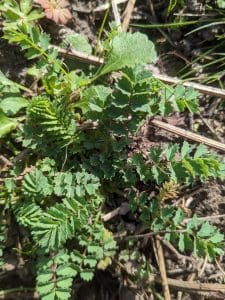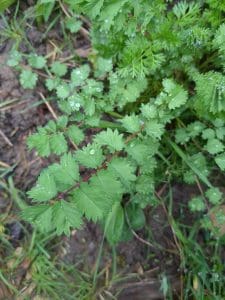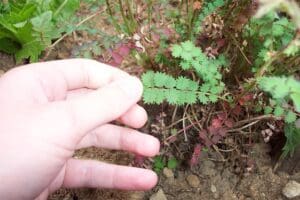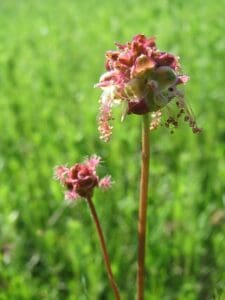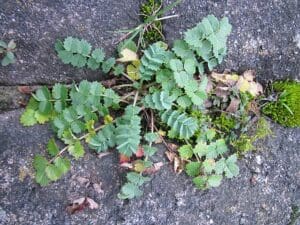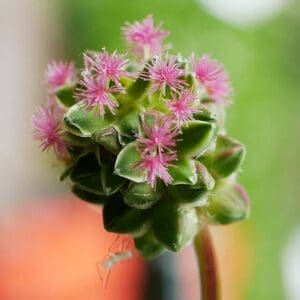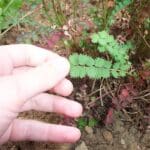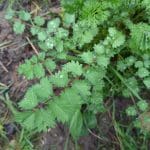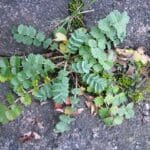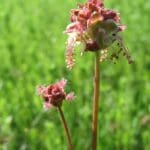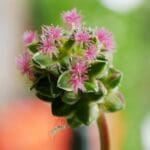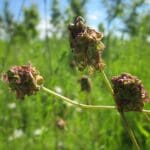Salad Burnet / Spring / Summer / Autumn / Winter / Edible
Salad Burnet is a perennial herb that has an appearance similar to a small fern. It generally grows up to 25–55 cm tall and has a long history of use as a food for both humans and animals.
Find our Wild Bean Salad recipe that this goes really well in
Common Names
Garden Burnet, Small Burnet, Burnet-bloodwort
Botanical Name
Sanguisorba minor
Scientific Classification
– Kingdom: Plantae
– Order: Rosales
– Family: Rosaceae
Physical Characteristics of Salad Burnet
Leaves
The leaves are made up of up to 12 pairs of rounded, toothed leaflets, which form a rosette at the base of the flower stem. When growing the leaflets look a little bit like a ladder.
Flowers
The flowers are tiny, green and mostly closed-up and clustered together like small globules on the end of the stalk. When ripe, a cluster of red styles emerges from the closed flower cup, and a similar cluster of longer yellow anthers droops downwards like a yellow fuzzy beard.
Habitat
This plant mainly grows in dry grassland on limestone soils.
Known Hazards
No known hazards
Could be Confused with
Great Burnet (Sanguisorba officinalis) but this is much taller and has a much larger flowerhead, it is also edible but quite rare.
Edible Uses
The name gives a clue as to its use, the fresh leaves have a cucumber flavour and are mainly used to flavour salads and salad dressings. Its also nice with cheese, and in soup and summer drinks.
It was previously used as a spice to flavour beer and brandy. It high in vitamin A, carbohydrates and protein.
Notes on Herbal Uses
This plant has in the past been used medicinally in Europe to control bleeding. It was also used as a tea to relieve diarrhea and has also been used as a coagulant and hemorrhagic for centuries and is also used to stop internal bleeding.
Extra notes from the Foragers
The Latin name for this plant, Sanguisorba comes from ‘sanguis,’ meaning blood, and ‘sorbeo,’ meaning to staunch.
The plant, when eaten by cows, increases its milk yield.
Reference:
https://wildflowerfinder.org.uk/Flowers/B/Burnet(Salad)/Burnet(Salad).htm



